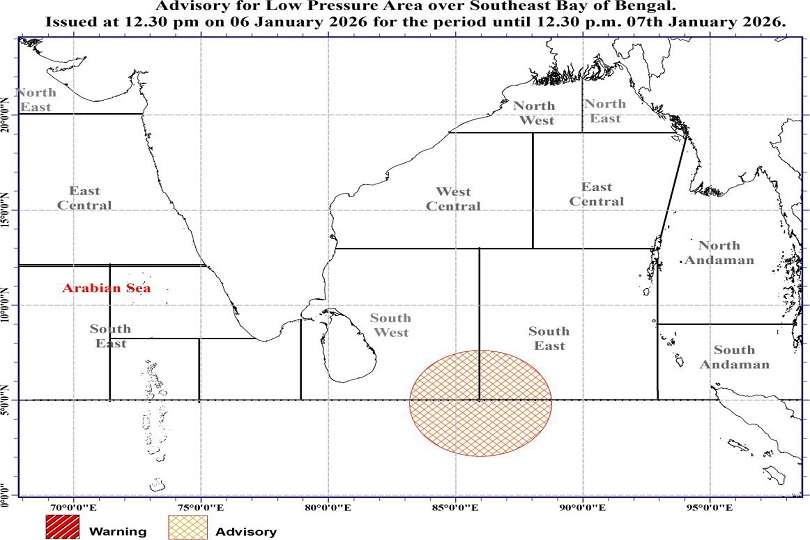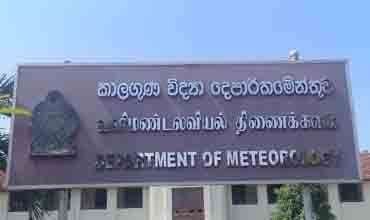Us tariff war, its fallouts and recovery options for Sri Lanka
By Dr. Y Ratnayake
With the capture of political reign in the USA by the Republican Party, its maverick president, in keeping with the pledges made at the election campaign, introduced political and economic policies that sent the global political and economic order into a tailspin, spreading shockwaves right across all the countries, both in the northern and the southern hemispheres of the world. According to some observers of the recent economic winds sweeping over America, the emerging trend is undoubtedly characterised by tariffs, trade and taxes in the time of Trump.
Although the actions initiated by the Trump government mark an unprecedented twist in geopolitics and the global economic atmosphere, it has not been a surprise at all to all those who keep their political reading abreast with the geopolitical storm gathering momentum during the last few months of the Biden administration. Since the new republican government spearheaded by diehard nationalist Donald Trump, the main motive behind the tariff reforms has been to regain the lost American dominance in economics as well as the trade arena by raising America to the position of de facto world epicentre that was unchallenged a few decades ago before China and Russia emerged as formidable rivals of the USA.
The Trump administration, contrary to the geopolitical strategy adopted by the Democrats, has entrenched its political ideology of making America first in the belief that all economic dealings of the USA must be firm-footed and redesigned on the principle of transactional exchange rather than on noneconomic, charitable or nonbusiness idiosyncrasies as espoused perpetually by the previous political regimes. The current tariff reforms, together with aberrations in geopolitical alliances, are the direct consequences of the new global strategy of the USA, which is propelled by the need for regaining the bygone American glory, a political cynosure, in the strategic global activities leading the country to a commanding position in commerce and geopolitical dominance.
Tariff as an Instrument of Fiscal Policy:
In the armoury of economic tools available for any government for directing economic and development drives, two well-known sets of instruments, namely monetary policy and fiscal policy, are frequently employed by many countries in both the developed and underdeveloped categories alike for achieving their economic goals, similar to the use of a rudder in a ship, which are essentially designed and subsequently moulded in the perceptual frame of the Republican think tank as far as the USA is concerned. Tariffs in general help the Federal Reserve rake in a sufficient amount of revenue for the Treasury for the disbursement on government businesses on one hand and supply a fiscal policy instrument for manoeuvring the other development objectives.
A border tariff is generally levied by the importer or exporter on selected merchandise with the primary concern for attaining the domestic economic well-being encompassing the protection of local manufacturers’ competitive manoeuvrability and the need for maintaining a favourable balance of trade for the country in question. At the initial stage, when an import tax is levied by the USA, the immediate impact is reflected in the price of imported goods by way of an upward shift in the marked-up price of the merchandise in question, which in time to come will lead to a decline of demand, in keeping with the law of demand, for the commodity that has gone up in price. However, it is worth noting that whether the price increase of imported goods to the local customers, juxtaposed with Americans, is always equal to the tax percentage or not depends on the price elasticity of demand that is determined by the factors interacting in the American market. Say, for instance, that a Sri Lankan shirt is invoiced at $10 at the arrival port of New York, and assuming that import tax is 44%, then the same shirt is to be sold, ceteris paribus, at $14.4 at a specific Walmart outlet, provided that the entire tax amount is transferred from the manufacturer to the prospective buyer in a straightforward process, which is a highly unlikely probability in a dynamic and vibrant consumer market. If the Sri Lankan exporter can reduce the invoiced price to $8 at the entry port of New York, perhaps due to cost reduction or adding a lower unit profit margin to the price of each shirt manufactured, then the tax levied in dollar terms is obviously reduced, although the US tax percentage remains unchanged. According to macroeconomic theory, an import tax is expected to place the locally manufactured products on competitive footing, stimulating the utilisation of indigenous resources at the beginning that leads to multiplier effects in the economy, and subsequently it curtails the syphoning off of the local financial resources, attributing to an improved trade balance in favour of the tax-levying country.
Ipso facto, the ability to achieve the above positive outcomes of an import tax hinges upon the ground situation prevailing in the country in question in relation to the following characteristics of the market structure that exist in both supply and consumer markets.
1. Degree of price elasticity of demand in the importing country for the tax levied on important items.
2. Ability of the local manufacturers to jack up their production to fill the vacuum created by imports.
3. Exporters’ ability to circumvent the high tariff rates through third-party manipulation and unscrupulous or deceitful methods.
4. Ability of the exporter to absorb tariff costs either by reducing the manufacturing cost or cushioning it on the entrepreneurial profits.
5. Brand loyalty and whether the product is sold in a captive market.
It is wishful thinking if one assumes that the imposition of an import tariff alone can produce all desirable results since there is a need for integration of tariff policy with the overall economic strategy to make tariff policy more goal sensitive and stimulative. Suppose that the imported items are used as intermediary inputs or raw material in another industry; then taxes levied on such items create ripple effects, mostly adverse in nature, through cost-push inflation and other consequential anomalies.
Outlook for Sri Lanka:
Exports:
According to what appears in authoritative public domains, the recent tariff increase by the USA has been pronounced as a reciprocal tax, which again reminds us of the perceptual underpinning of the entire episode that is justified in terms of reshaping the international trade on a transactional basis as declared by the US president.
As data testify, Sri Lanka’s overall exports mostly include textiles and garments (40% of total exports) and tea (17%) in 2024. The balance of 43% comprises spices, gems, coconut products, rubber and fish. Main export partners are the United States, the United Kingdom, Germany, Belgium and Italy. Sri Lanka imports petroleum, textile fabrics, foodstuffs and machinery and transportation equipment. Main import partners are India, China, Iran and Singapore.
The major exports from Sri Lanka to the USA include apparel, rubber products, coconut products, and transport equipment, while the other export items include textiles, gems, cinnamon, electrical and electronic products, and tea bags. A further synthesis of export statistics provides commodity-wise composition of Sri Lankan exports to the global market.
Export item classification:
1. Apparel: A major export category, with items like men's and women's undergarments, outerwear, and sportswear being prominent.
2. Rubber Products: Including tyres and tubes.
3. Coconut Products: Covering various uses of the coconut, including kernel and shell products.
4. Transport Equipment: Including motor vehicles and parts.
5. Textiles: A wide range of textile products, including knitted and woven fabrics.
6. Gems and Jewellery: A significant export category, including precious stones.
7. Cinnamon: A traditional export, known for its unique flavour.
8. Electrical and Electronic Products: Including various components and devices.
9. Tea: A traditional Sri Lankan export, with packaged tea being a notable item.
As per documented data, the total export value from Sri Lanka to the United States was USD 2,909.97 Mn in 2024, and the total imports from the United States to Sri Lanka for the same period amounted to USD 443.90 Mn. The United States is the 09th import origin for Sri Lanka in 2024.
Sri Lanka’s exports to the United States have increased by 5% in 2024 compared to 2023. Imports from the United States have decreased by 13% in 2024 compared to 2023.
To be specific, Sri Lanka’s main export products to the United States in 2024 were men's and women's undergarments, women's outerwear, men's outerwear, pneumatic & retreated rubber tyres & tubes, T-shirts, gloves, mitts & mittens of textile, warm cloths (jerseys, pullovers, etc.), industrial & surgical gloves of rubber, active wear/sportswear, and babies' garments.
Imports:
Sri Lanka imports a variety of goods from the United States, with the key items including electrical and electronic equipment, plastics, pharmaceutical products, and paper and paperboard. In 2023, the total value of imports from the US to Sri Lanka was USD 507.40 million, making the US the 3rd largest import origin for Sri Lanka.
A glance at statistics indicates a clear breakdown of the key merchandise categories that were imported from the USA to Sri Lanka in 2024:
1. Electrical and Electronic Equipment: This is a significant import category, with a value of $23.19 million in 2024.
2. Plastics: Plastics are another major import, valued at $20.66 million in 2024.
3. Pharmaceutical Products: This category is also important, with a value of $17.16 million in 2024.
4. Paper and Paperboard: Paper and paperboard imports from the US were valued at $15.40 million in 2024.
5. Other Imports: Sri Lanka also imports various other goods from the US, including men's and women's undergarments, women's outerwear, men's outerwear, pneumatic & retreated rubber tyres & tubes, T-shirts, gloves, mitts & mittens of textile, warm cloths (jerseys, pullovers, etc.), motor vehicles & parts, active wear/sportswear, and babies' garments.
As different data sources illustrate, the USA’s total goods trade with Sri Lanka was estimated at $3.4 billion in 2024. The U.S. goods exports to Sri Lanka in 2024 were $368.2 million, an increase of 4.9 per cent ($17.1 million) from 2023. USA goods imports from Sri Lanka totalled $3.0 billion in 2024, registering a 6.1 per cent increase ($173.5 million) from 2023. The U.S. goods trade deficit with Sri Lanka was $2.6 billion in 2024, a 6.3 per cent increase ($156.4 million) over 2023.
Apparently, the face value of the above statistics indicates without doubt that the USA has a bone of contention with Sri Lanka over the trade balance during the last few years, as records testify to the fact that the USA has experienced an increasingly deteriorating trade gap in the context of the balance of trade with Sri Lanka. The initial imposition of a forty-four per cent tariff on the American imports of Sri Lankan goods should not be considered as a death knell on the coffin but be recognised as a window of opening for Sri Lanka for proactive negotiation on a reciprocal basis since the new American administration firmly believes that widening disparity in the trading values is an issue to be reckoned with. For instance, Vietnam, which has been faced with the same tariff increase, stated their willingness to negotiate posthaste, indicating the possibility of adopting a zero tariff on US goods, a conciliatory gesture for a compromised settlement on the issue.
Adverse Fallouts on Sri Lanka:
If timely remedial action is not initiated posthaste, then it cannot possibly avoid experiencing the devastating sledgehammer effects of the tax increase generally in two time dimensions, the short run and the long run, that might create an economic abyss akin to the situation that existed during the era of the Covid epidemic. The short-term outfalls may include cancellation of import orders, factory close downs, loss of employment and so forth, mainly in the apparel sector, since Sri Lanka’s main export volume to the USA is clustered around the garment industry. In particular, the resulting loss of employment in the garment sector may produce vicious ripple effects as its malefic outcomes percolate to the bottom layer of the rural economy of Sri Lanka since rural female workers are predominantly employed in the apparel industry.
The short-term consequences may gather momentum and be transformed into a whirlwind in a foreseeable period of time by way of declining foreign exchange reserves, failure to honour international debt commitments, inability to finance the vital import requirements such as fuel and medicine, which will drag the country to the position of a banana republic or an unpredictable calamity that paves the way for, without doubt, liquidation of the state of Sri Lanka. The IMF and international economic monitoring groups have already voiced their scepticism about the ability of the country to successfully complete the debt restructuring program in the face of shrinking foreign exchange reserves caused by the imposition of higher import taxes. Many countries in Asia, including India, Vietnam and Thailand, have already mapped out their strategic response to the looming tax debacle through proactive negotiations on a business-to-business basis by sending their trade delegations to the USA, setting the negotiation process in motion without delay.
Options Available for Sri Lanka:
The first requirement for finding remedial action for the current economic conundrum faced by the country is largely of a political nature, which makes it urgent, to be more specific, for the governing hierarchy to adequately visualise the parameters of the problem, its long- and short-term repercussions and the identification of pragmatic options which can be used as a launching pad for the formulation of an appropriate action plan subsequently. First of all, it is better to be convinced that the Trump administration thrives on a business-based solution to its problem of perpetually widening unfavourable trade balances with its trading partners rather than reaching a solution based on sympathy, charity or providing a sort of pogey to developing countries. The USA has not minced its words regarding the issue and clearly shown the way out and way forward by developing a model based on trade parity for conducting international trade which stands on the guiding principle of reciprocity.
It deems necessary as the first step that the focus of the political hierarchy be shifted from the demagogic agenda, as it is happening at the movement, to a pragmatic and development-orientated agenda with the utmost seriousness, and, in the meantime, the channelling of scare public funds into some boondoggle projects, such as the census on monkeys which lack the final actionable goals, should be eliminated forthwith or minimised at best.
As it has been proved by the economic history of many countries, one cannot find a quick solution to a complex international problem related to trade with one stroke of the pen, as the saying goes, but the goal of reaching a result-orientated solution can only be fulfilled through the hard work, well-orchestrated diplomacy, perseverance and devotion of the policy makers consistently for the betterment of the country in a transparent political and economic environment. In a nutshell, the writer is of the view that the current crisis of the high tax phenomenon can be effectively addressed if appropriate action programmes are initiated in affiliation with the following visualised economic and political paradigms.
1. Conduct a sort of sensitivity analysis on different plausible tax rates on imports from the USA for assessing the benefit cost in relative terms at each tariff level vis-à-vis the US tax on Sri Lankan exports and thereafter negotiate with the US counterparts for reaching a compromised solution.
2. Explore the possibility of benchmarking the strategy adopted by Vietnam in handling the same tax problem with the USA. However, the way China handles the trade dispute with the USA is poles apart from the strategies adopted by other countries due to geopolitical realities surrounding China.
3. Look into the possibility of joining with trade blocs and reaching bilateral agreements with India, Singapore, Europe, BRICS, etc.
4. Find ways and means for expanding and diversifying the export basket.
5. Actively engage in searching for new export markets although the switching cost of mobilising into new markets might sometimes be exorbitant.
Strangely, the political connoisseurs in Sri Lanka are contented with the abracadabra, although conjuring is not followed at all thereafter.
(The writer is a former Senior Consultant at the Sri Lanka Institute of Development Administration.)
-
Still No Comments Posted.















Leave Comments